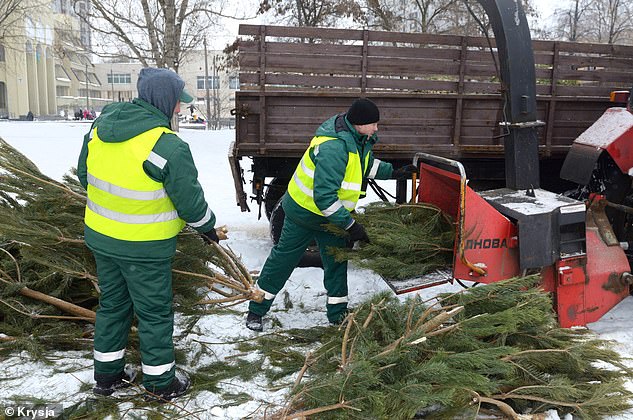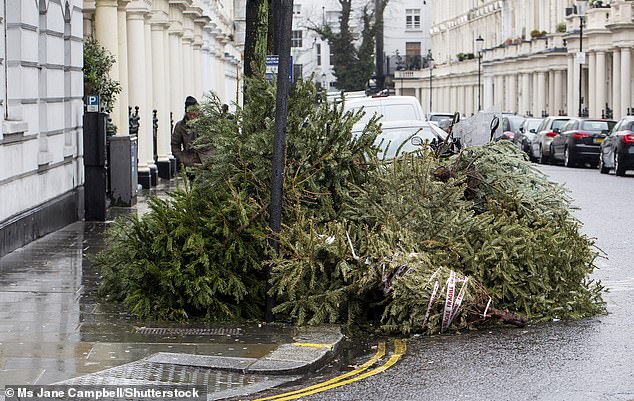Don’t know how to dispose of your Christmas tree? Must-read advice of scientist who says there’s a way you can use it again NEXT year
As Christmas sadly comes to an end, the arduous task of taking down your festive decorations looms.
And deciding what to do with your tree after it's been stripped of its baubles is one of the most stressful experiences this side of Christmas Day.
Luckily, scientists have shared their simple tips for dealing with it well while keeping your carbon footprint as low as possible.
This could help prevent piles of abandoned pine trees lining the streets well into January.
Professor Ian Rotherham, an ecologist at Sheffield Hallam University, said there are a number of rules to follow when it comes to disposing of Christmas trees.
When it comes to disposing of your Christmas tree, experts recommend collecting or recycling it to reduce your carbon footprint
And that's not to send it to a landfill by dumping it in the trash.
Even though it's a tempting quick fix, pine trees emit harmful greenhouse gases when they decompose in a landfill.
'Disposal in a landfill is much more harmful than incineration,' Professor Rotherham told MailOnline.
Burning the tree is also a bad option as it releases carbon dioxide and other pollutants into the air and can also be dangerous.
Even if you burn the tree in a large yard, the needles and small twigs also have a large surface area, making them flammable and difficult to control.
So what should you do instead?
Your local council will probably collect and recycle it, although you may have to take it to a nearby recycling point.
Additionally, many Christmas tree retailers, such as Pines and Needles and Tree2Me, offer a collection option so it can be repotted and reused next year.
Alternatively, charities will come and collect your tree to repot it or recycle it into chips that can be used in the local community.
'If the spent tree is recycled as wood chips, all of that material is ultimately returned to the soil and only a small portion is immediately released into the atmosphere,' says Professor Rotherham.

Christmas trees can be shredded into pieces, which are then used locally in parks or woodland areas
The JustHelping website This allows you to find your local charity that offers the service, in return for a small fee.
Another option is that you can repot it yourself so that you can use it for many Christmases to come, as long as it is watered regularly.
'Use it for several years and eventually plant it outside to continue growing,' said Professor Rotherham.
'That way you even clean up some of your carbon footprint from other Christmas celebrations.'
If you decide to repot your tree in your garden, it may be worth cutting off about 3cm from the bottom of the trunk.
“This creates a new cut and opens the pores in the bark, allowing the tree to drink water,” says Veronika Kusak, director of Pines and Needles.
Another option, according to the Royal Horticultural Society (RHS), is to cut the tree into branches and place them neatly in a corner of the garden to provide insects with a home.
'The chopped tree can be piled in a remote part of the garden where it will slowly break down and disappear, feeding and protecting wildlife as it decays,' says Guy Barter, head gardener at RHS.

More than eight million Christmas trees are thrown away in Britain every year, many of which are dumped or left on the streets in the days after New Year
More than eight million Christmas trees are thrown away in Britain every year, many of which are left on the streets in the days after New Year
Many are not even picked up or collected, making dead pine trees a common sight well into January or even February.
Britain is described as a 'Christmas tree graveyard' in the first few months of the year and a sad reminder that the holidays are finally over.
